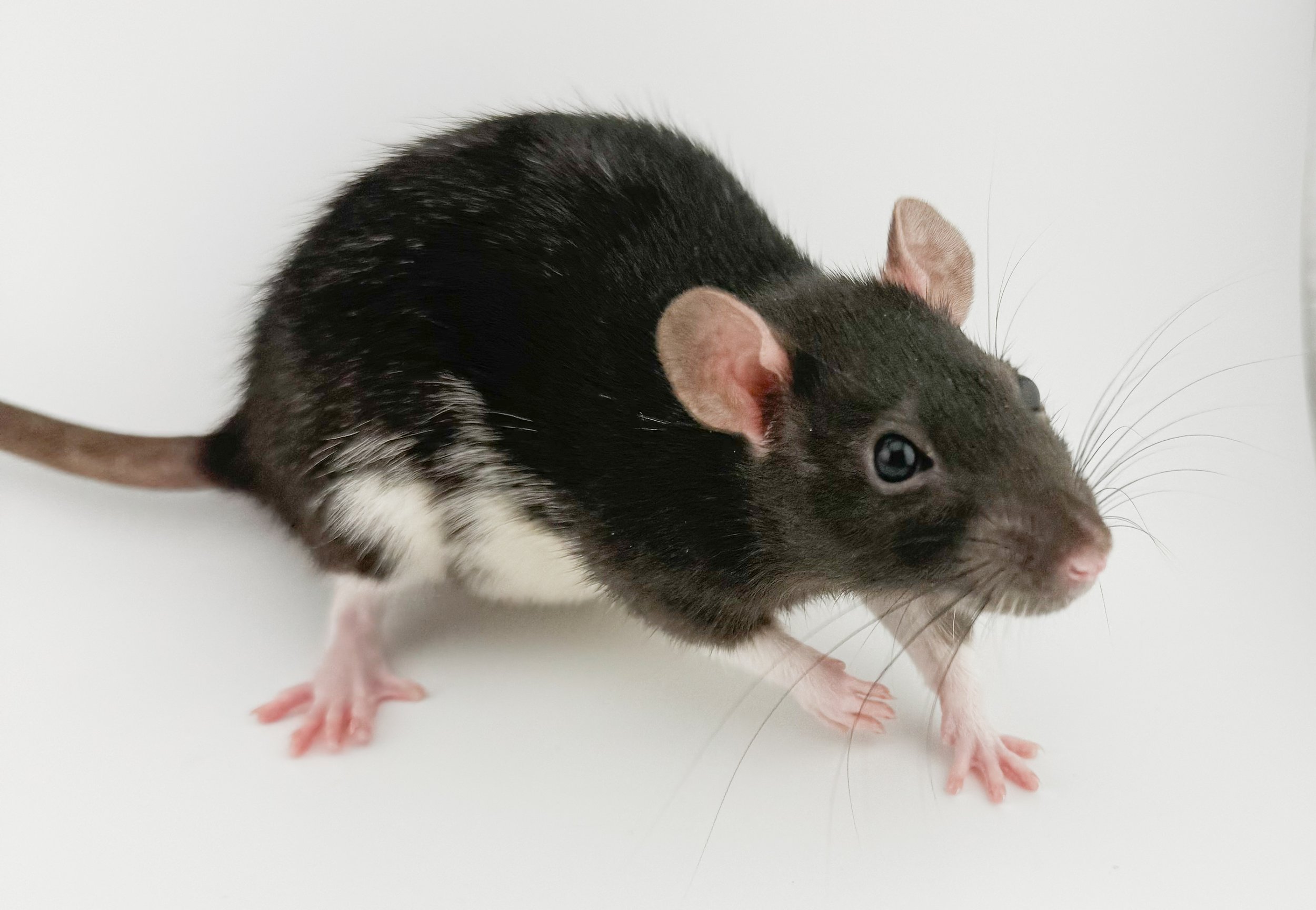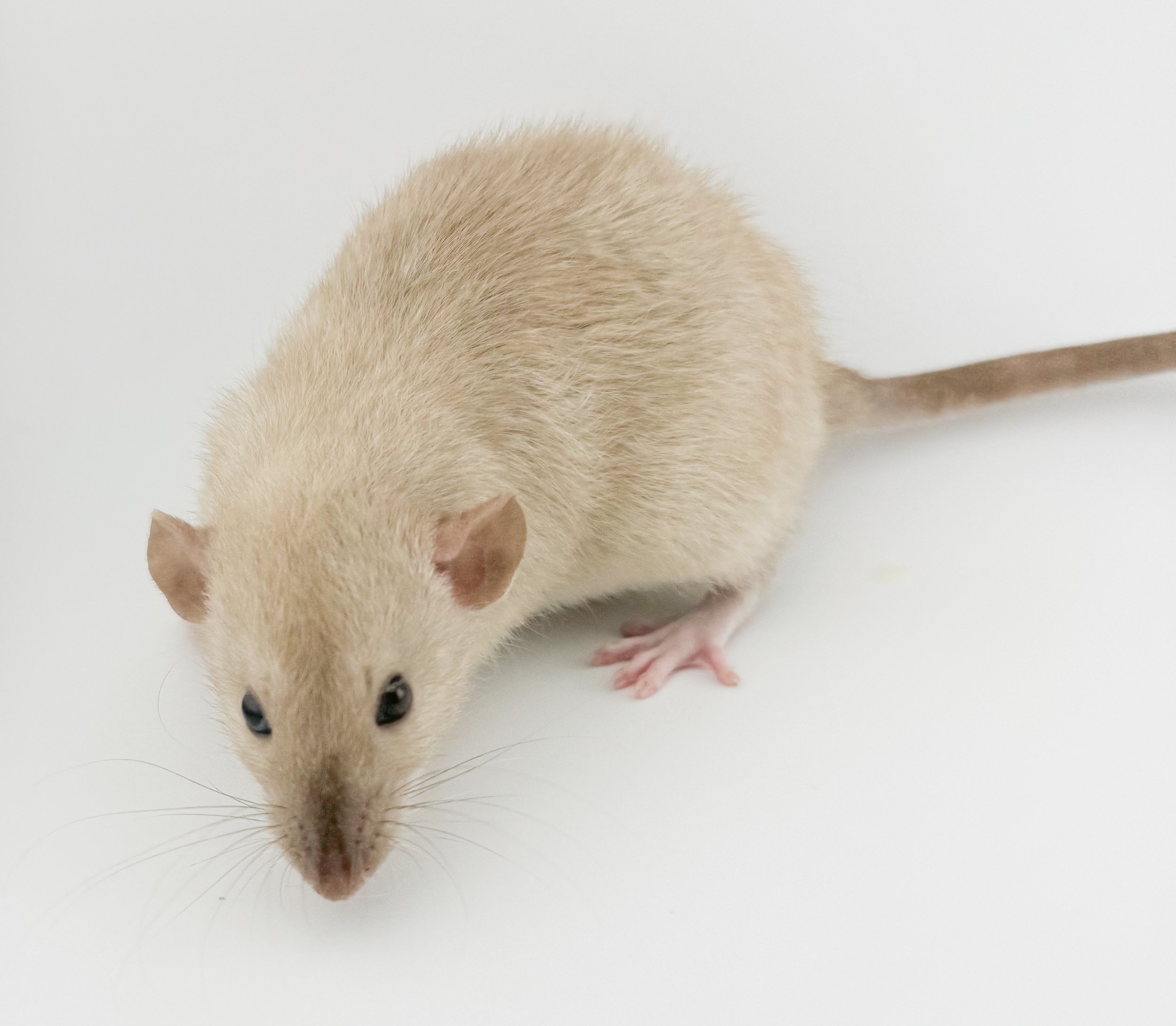
Coats, Colors and Patterns
Contents
Coat Types
Standard
Smooth coat with a glossy-like appearance. The most common rat coat type.
Silvermane
The base color will retain full color, while the tips will have a silvered appearance. These silvered tips are the result of hair translucence. Silvermane causes the hair to feel softer due to the lack of pigment in the hair.
Rex
Curly hair covering the whole body and adorned with matching curly whiskers. Results more apparent in younger rats and males.
Double Rex
Two copies of the Rex gene that results in hair patchiness. Depending on the molt this can result in a hairless look, or a short grown in hair like shown above. Molting results can change with time.
Velveteen
Similar to the curly hair seen in Rex rats. However, they have more of a wavy appearance to both their hair and whiskers.
Harley
Instead of a normal smooth short coat, these rats have a finer feeling long hair.
Coat Patterns
Self
All over color body coverage. No additional white markings. This extends to the feet and the tail.
Irish
White marking on the underside, white tail tip and white feet.
Berkshire
Colored top of the body with a white belly, feet, and tail. Distinction between the color and white should be an even line.
Variberk
Similar in appearance to Berkshire with a colored body and white belly, however in Variberk the white extends further up the sides.
Variegated
Patches of color interspersed on the coat. Underside is white with no markings.
Hooded
White body, belly, and feet with colored marking that encompasses the face and front arms. Marking extends in a straight line to the base of the tail.
Capped
Body is white with no additional markings. The head is colored and does not extend past the head.
Masked
Body is white with no additional markings. A colored mask shape decorates the top of the face between the eyes and muzzle area.
Bareback
White body, belly, and feet with colored marking that encompasses the face and front arms.
Blaze
Triangle shaped marking that starts behind the eyes and tapers around the muzzle.
Specialty Coat Patterns
White Sided
Similar to the look of a hooded rat, but instead of the color extending to the base of the tail, it extends into a pant-like appearance. The result is white looking panel sides.
Red-Eyed Siamese
A cream colored rat that is devoid of all markings with age. Points are to be an even darkened color on both the muzzle and base of the tail. This variety has red eyes.
Red-Eyed Marten
Colored body with lighter coloration on the face surrounding the eyes and the muzzle area. Light ticking extends along the body color. This variety has red eyes.
Black-Eyed Marten
Colored body with lighter coloration on the face surrounding the eyes and the muzzle area. Light ticking extends along the body color. This variety has black eyes.
Downunder
Distinct colored patterning on the belly. Can exist in a variety of colors and belly patterns usually mimicking the pattern type on the dorsal side.
Marble / Tabby
Body consists of a mottling appearance with darkened spots. A thin dark dorsal stripe is also common in marble rats.
Burmese
Brown body coloration with Siamese-like darkened points
Himalayan
Similar in appearance to the red-eyed Siamese, but with lighter colored points. Usually the body color is less cream compared to the Siamese.
Dalmatian
STILL NEED TO WRITE
Coat Base Colors
Agouti
Fawn
Silver Fawn
Blue Agouti
White
Black
Beige
Champagne
Russian Blue
Mink
Cinnamon
Cream
Chocolate
Additional Modifiers
Top-Ears
Standard typed of ears where they extend upwards from the face. Edges of the ears curl forward.
Dumbo Ears
Variety of ears where they extend from the sides of the face with a large, flattened, and rounded appearance.
Dwarf
A variety of rat where the full size is much smaller than a normal standard size. Pictured above is an example of a full grown adult male dwarf rat.
Odd-Eye
Results in the eyes being a different color from one another. Also called heterochromia.








































